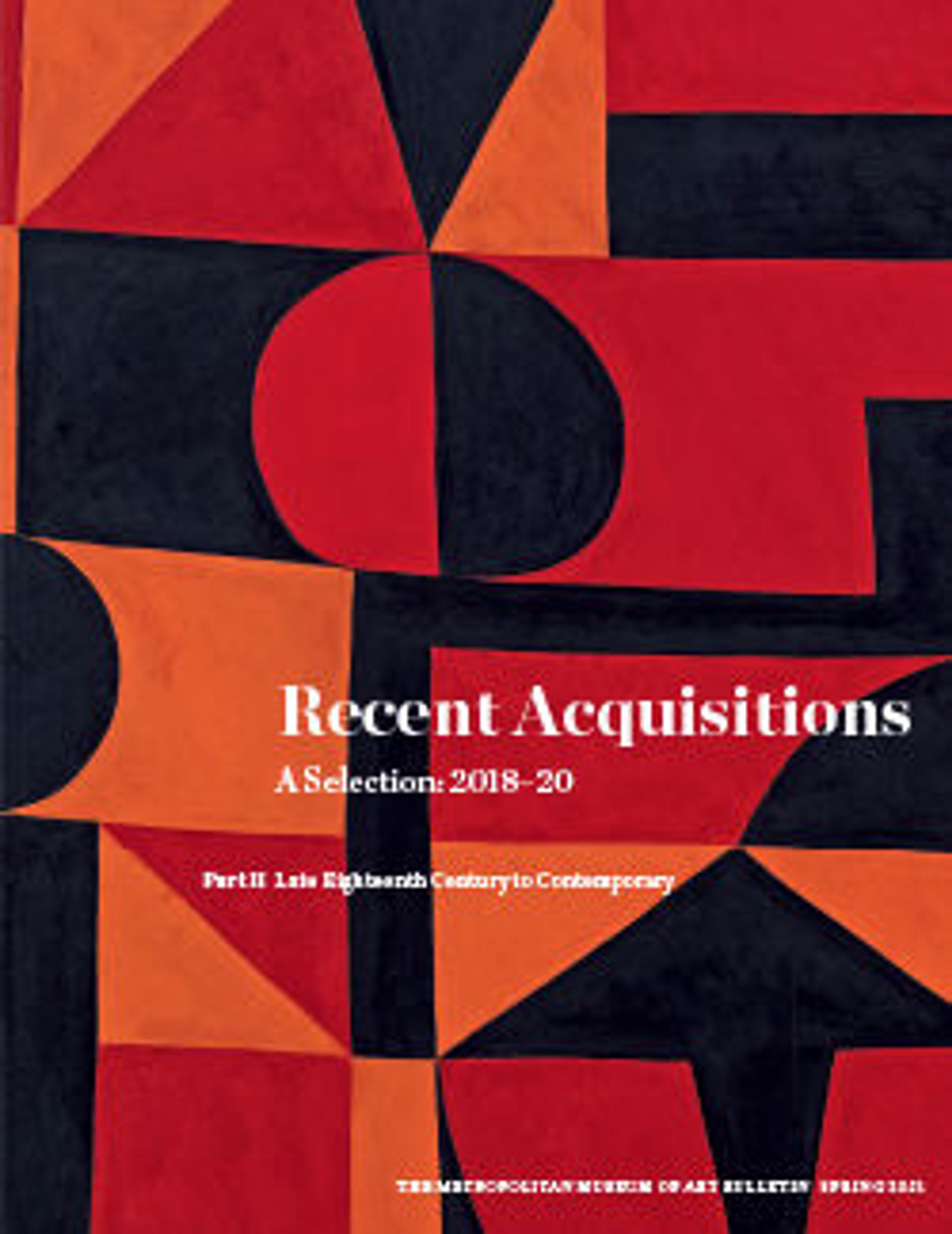Carved chest
French-born Laurent is celebrated as the first American practitioner of direct carving, a 20th-century sculpture technique of working with natural materials without preliminary modeling. This approach allowed the artist to bridge his developing modern style, drawn from both folk traditions of his native Brittany’s medieval stone cutters as well as those of his adopted country of America. He was mentored by artist and critic Hamilton Easter Field, and together they founded the Ogunquit School of Art, in Maine, where they collected and were inspired in their own creative practice by early American folk and vernacular arts. This carved chest was commissioned by Field’s mother, Lydia, for the family home at 106 Columbia Heights, Brooklyn, as part of a larger aesthetic program that included plans for painted panels by Picasso, one of which is in The Met’s collection. Rendered in a direct carving style of great complexity, Laurent’s carved panels feature personal narratives of his early roots in Concarneau, France; his life with Field in Brooklyn and Ogunquit; and his experience as a recent immigrant to the United States.
Artwork Details
- Title:Carved chest
- Maker:Robert Laurent (American (born France), Concarneau 1890–1970 Cape Neddick, Maine)
- Date:1911
- Geography:Made in Brooklyn, New York, United States
- Culture:American
- Medium:Black walnut, tulip poplar, plywood, and brass
- Dimensions:67 × 57 × 21 in. (170.2 × 144.8 × 53.3 cm)
- Credit Line:Purchase, Ronald S. Kane Bequest, in memory of Berry B. Tracy, and Louis V. Bell Fund, 2019
- Object Number:2019.186a–o
- Curatorial Department: The American Wing
More Artwork
Research Resources
The Met provides unparalleled resources for research and welcomes an international community of students and scholars. The Met's Open Access API is where creators and researchers can connect to the The Met collection. Open Access data and public domain images are available for unrestricted commercial and noncommercial use without permission or fee.
To request images under copyright and other restrictions, please use this Image Request form.
Feedback
We continue to research and examine historical and cultural context for objects in The Met collection. If you have comments or questions about this object record, please contact us using the form below. The Museum looks forward to receiving your comments.
